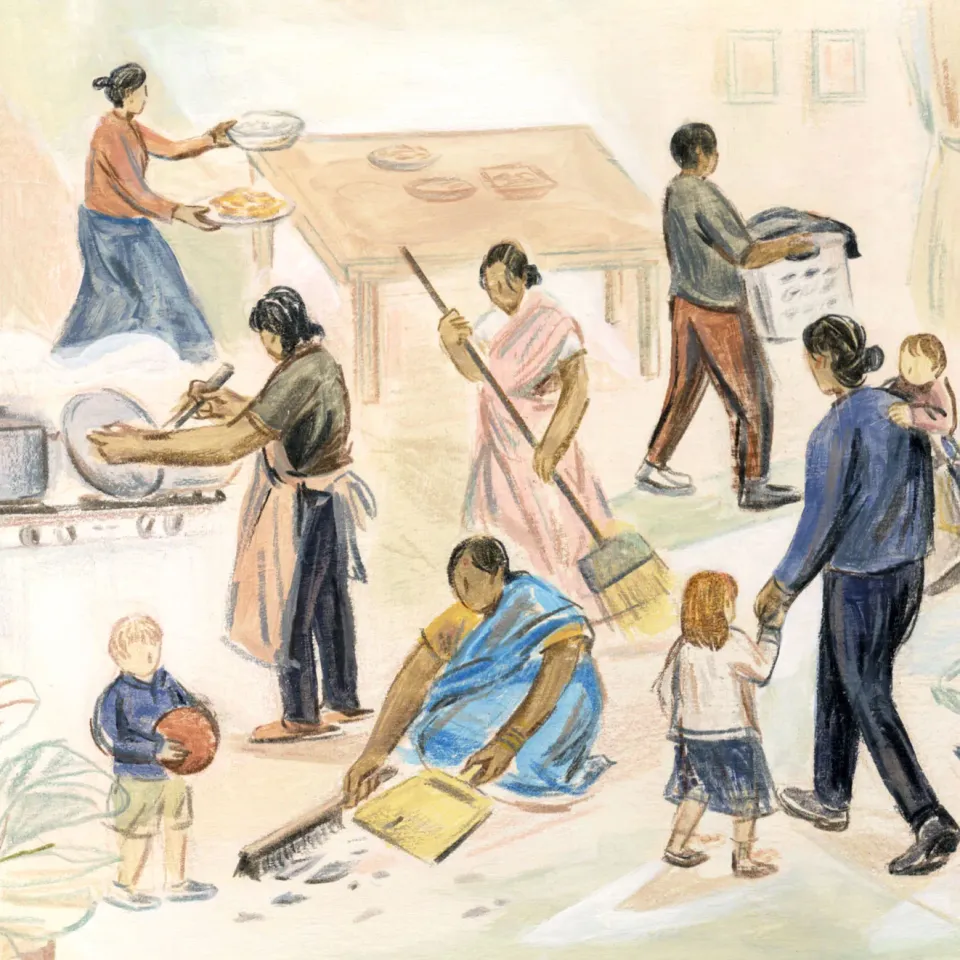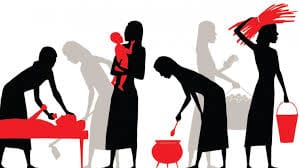The Hidden Economy: How Women’s Work Shaped the World

Walk into any kitchen, classroom, or hospital today, and you’ll likely see women at work. But here’s the thing, women have always been working. From grinding grain in ancient villages to stitching textiles in industrial mills, their labor has been at the core of survival. The catch? Much of it has been dismissed as “help” rather than real work.
The story of women’s work is really the story of invisible economies, vital systems of care, production, and creativity that rarely made it into the history books or GDP charts. And yet, without them, societies would have crumbled.
Hunting, Gathering, and Early Economies
For a long time, history lessons painted a simple picture: men hunted, women gathered. But new archaeological findings are rewriting that script. In Peru, for example, a 9,000-year-old female skeleton was found buried with hunting tools. “This discovery suggests that women were big-game hunters too,” anthropologist Randy Haas told Science Advances in 2020.
And even if women weren’t always out spearing animals, their “gathering” was far from casual berry-picking. It was skilled work; knowing which plants to harvest, how to store food, and which herbs healed wounds. As historian Gerda Lerner once noted: “The contribution of women to the development of agriculture and medicine has been fundamental, though rarely acknowledged.”
Ancient Worlds: At Home and Beyond
Fast forward to ancient Egypt, Greece, and Rome. Women were still everywhere, tending crops, selling goods, brewing beer, weaving textiles. In fact, cloth production was so central that women’s spinning and weaving fueled entire trade networks.
But legally and socially, women were boxed in. “A woman’s place is in the home,” declared Aristotle, setting a precedent that would echo for centuries. Roman law often denied women property rights, reinforcing their dependence.
Yet glimpses of agency remain. “Women ran marketplaces, served as priestesses, and sometimes even managed estates,” writes historian Sarah Pomeroy in Goddesses, Whores, Wives, and Slaves. “They were indispensable, even if their labor was never officially valued.”

Medieval Life: Fields, Guilds, and Alewives
The Middle Ages might surprise you. Women weren’t just confined to the home, they were in fields, on farms, and at markets. They baked bread, brewed ale (at one point, most medieval brewers were women), and spun wool that fueled local economies.
Some entered guilds as artisans. Widows occasionally took over workshops. Yet, as guilds professionalized, women were steadily pushed out.
Herbalists and midwives also faced growing hostility. By the late Middle Ages, male-dominated medical institutions dismissed women’s healing work as superstition. As one 15th-century cleric sneered, “Women are by nature deceivers, not physicians.”
Early Modern Times: The Rise of “Invisible” Labor
By the 16th and 17th centuries, capitalism was sprouting, and women were both central and sidelined. The “cottage industry” depended on women spinning and weaving at home for pennies. Rural families leaned heavily on wives and daughters, while male merchants reaped profits. Colonialism made the picture more global.
Industrial Revolution: Factories and “The Angel in the House”
Then came the Industrial Revolution. In Britain and the U.S., young women flooded factories, especially textile mills. “They are the real power that keeps the factories going,” observed social reformer Frances Trollope in 1832. But employers paid them a fraction of men’s wages, insisting their income was only “pin money.”
At the same time, middle-class culture worshipped the domestic “angel in the house.” As poet Coventry Patmore famously wrote in 1854:
“Man must be pleased; but him to please Is woman’s pleasure.”
That ideal erased the fact that women, rich or poor, were working harder than ever. Early feminists noticed.
The 20th Century: Wars, Wages, and the Double Burden
World wars briefly shifted perceptions. With men at war, women took over factories and farms. In Britain, “munitionettes” risked their lives handling TNT. In the U.S., Rosie the Riveter became an icon. “We can do it!” declared the wartime poster, but when peace returned, women were told to hand jobs back to men.
By the 1960s and 70s, feminists had had enough. “Women do two-thirds of the world’s work, receive 10 percent of the world’s income, and own 1 percent of the means of production,” Gloria Steinem reminded audiences. Activists launched the “Wages for Housework” campaign, arguing that domestic labor deserved economic recognition. “They say it’s love,” wrote theorist Silvia Federici, “we say it’s unwaged work.”
The 21st Century: The Care Economy Comes Into Focus
Today, women make up nearly 40% of the global workforce. But they still perform three times more unpaid care work than men. If counted, the International Labour Organization says, that labor would add $10 trillion to the global economy.
The pandemic made it impossible to ignore. “COVID-19 has revealed the structural inequalities of care,” UN Women reported in 2021. Women were both “essential workers” on the frontlines and exhausted caregivers at home. Many left the workforce altogether, a setback economists now call the “she-cession.”
Some governments are finally paying attention. Iceland is experimenting with equal parental leave. New Zealand has piloted policies to measure unpaid care in GDP. But as economist Nancy Folbre puts it: “Until we recognize care as the foundation of the economy, gender inequality will remain built in.”
Why This History Matters
The long arc of women’s work tells us two truths. First: women have always been indispensable to survival and prosperity. Second: recognition has lagged centuries behind reality.
The path forward isn’t charity, it’s justice. Universal childcare, parental leave, domestic worker protections: these are not luxuries, but economic investments. Behind every wage earner is someone cooking meals, cleaning clothes, or caring for children.
Women’s work has never been “help.” It has been, and continues to be, the engine of human history. The question now is whether the 21st century will finally admit it.
Fatima Hassan is a freelance journalist and the co-founder & Multimedia Editor of Echoes Media, dedicated to crafting impactful stories that resonate with diverse audiences. A journalism graduate of Northwestern University, Fatima combines analytical rigor with creative storytelling to explore complex issues and amplify unheard voices.

Member discussion